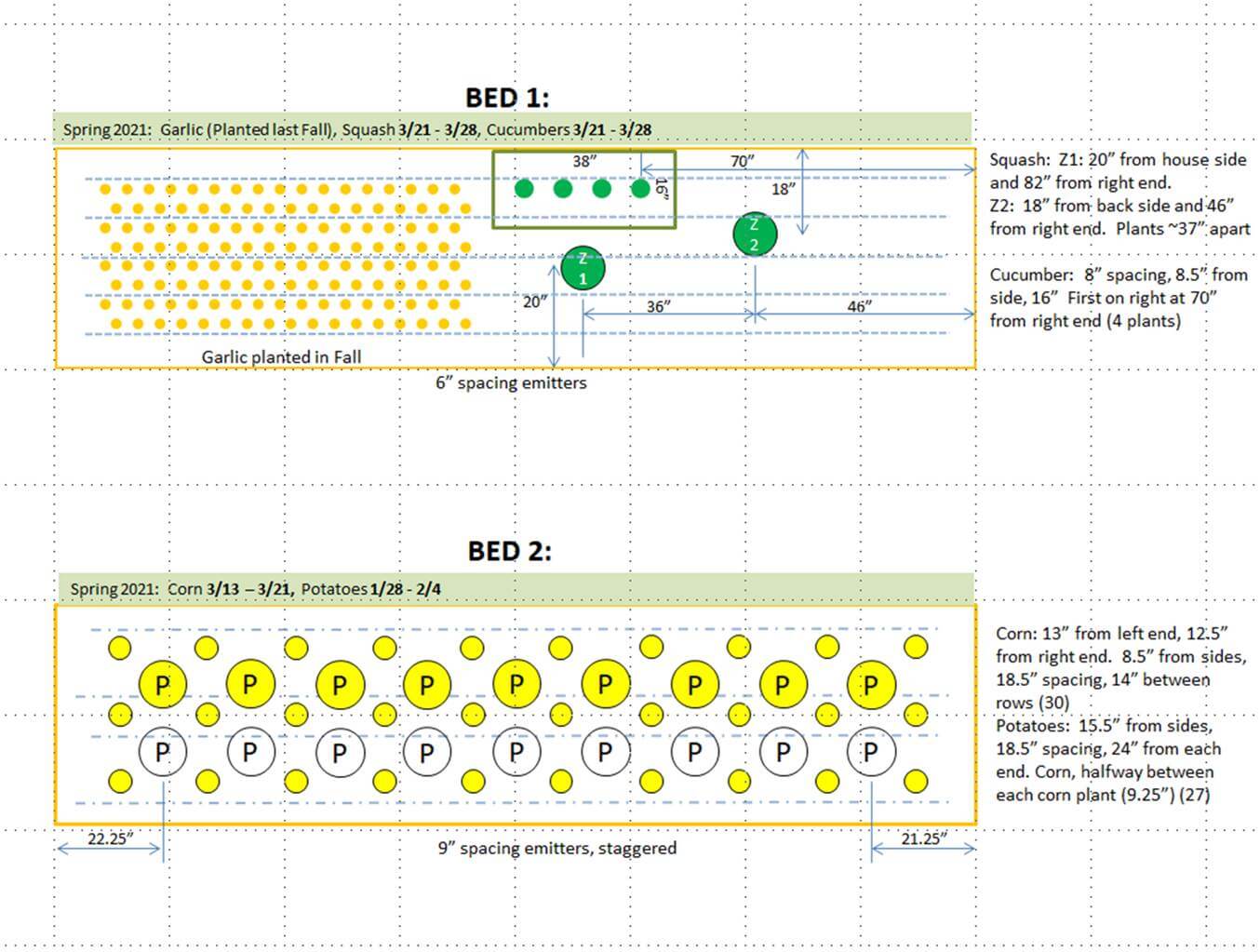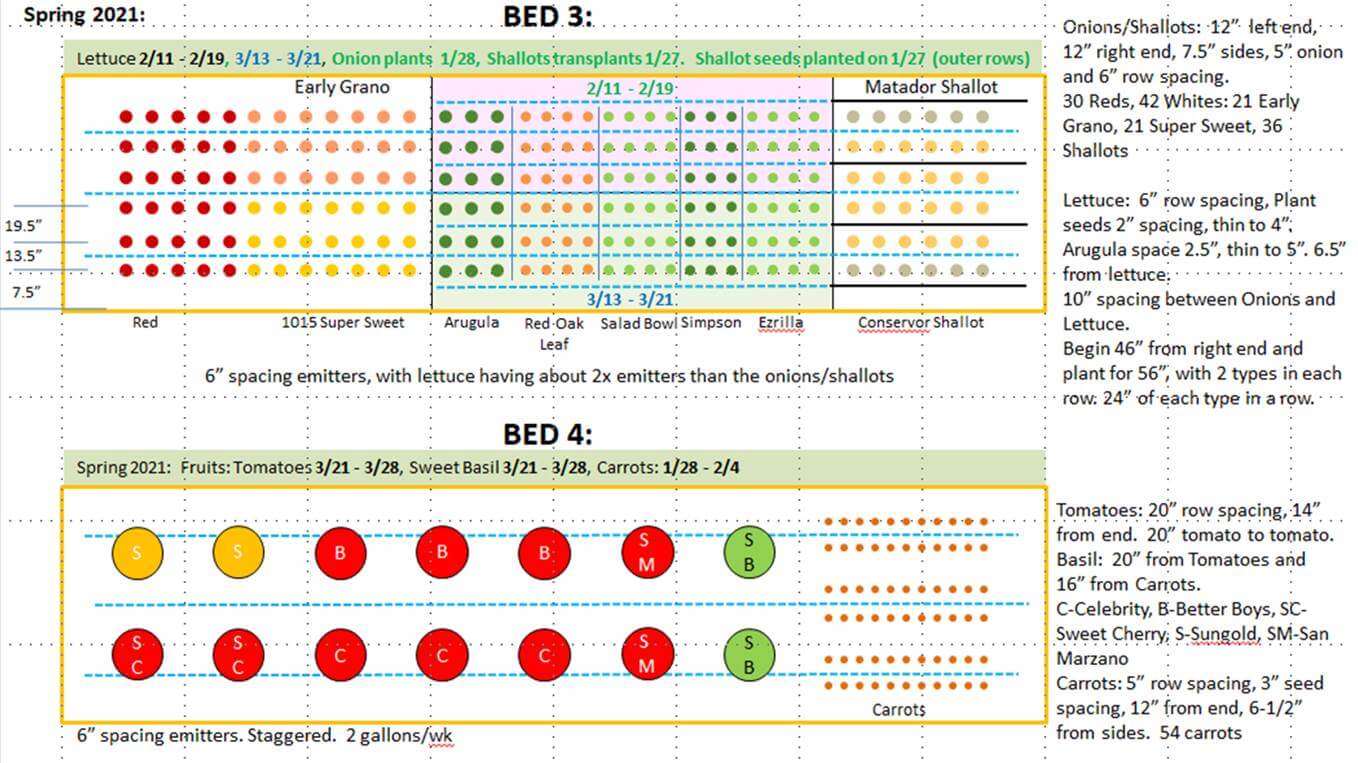
“I have 4 raised beds, each 16′ x 3.75′ (60 SF ea.) I live in Georgetown, TX Zone 8. I have attempted to set up the planting plans for each bed for a 4-year rotation. This spring garden, going in now:
- Bed 1: Garlic (planted last 11/1), and Kale. The Kale is still producing, and the garlic will be harvested in June. The Kale will be replaced with 4 cucumbers (on trellis) and 2 Zucchinis near the end of March.
- Bed 2: This will have 18 hills of potatoes (planting tomorrow), and 30 stalks of sweet corn (mid-March).
- Bed 3: Red & White Onions on one side, Lettuces & Arugula in the middlemost section, Shallots on the other side.
- Bed 4: (had clover growing all winter, which I turned over a few weeks ago), Tomatoes over 2/3rds of Bed, with Sweet Basil going in mid to late March, and one end having carrots (just planted)
I am interested in knowing what to plant in the fall for each bed, and then the following seasons… I have a document with what I think should work from a rotation and companion standpoint, but I am not sure. I would really like to dialog with you to understand better the best approach so the beds can be productive throughout the growing seasons. I hope I have not put too much into this field.” Question from Russ of Georgetown, Texas
Answer: You have a very detailed plan, and it seems like you have everything under control. Still, as requested, I will try to answer your questions.
Heavy-Feeding Versus Ligh-Feeding Crops
In general, you want to follow up heavy-feeding crops that are disease-prone, like tomatoes, peppers, squash, cucumbers, and corn, with low feeding crops, like greens and small root crops, as well as nitrogen-fortifying legumes, like peas and beans. Heavy feeders should be placed on at least a three-year cycle. Four years is even better! Your clover winter cover crop is an outstanding choice that naturally adds nitrogen to the soil, like its close relatives, beans and peas.
Cool-Season Crops
The growing season can be started and ended with cool-season crops of all kinds. Good fall root crops that like cooler weather include beets, winter carrots, parsnips, radishes, rutabagas, and turnips (click here to learn more about growing winter root crops.) Cole crops are also big cool-season vegetables. The best for fall are broccoli, Brussels sprouts, cabbage, cauliflower, collards, and kale. Finally, cool-season greens and herbs are outstanding for fall, winter, and spring. Try arugula, lettuce, mache, and radicchio as well as parsley, winter savory, thyme, sage, and chives. Peas are an outstanding cool-season crop for late winter or spring down in Texas.
Sometimes it is also nice to clean up and cover vegetable beds with compost for the season and give them a rest.
For more rotation tips, I recommend that you read SPRING TO FALL VEGETABLE ROTATION PLANTING FOR NON-STOP GARDEN PRODUCE.
Happy gardening!
Jessie Keith
Black Gold Horticulturist








